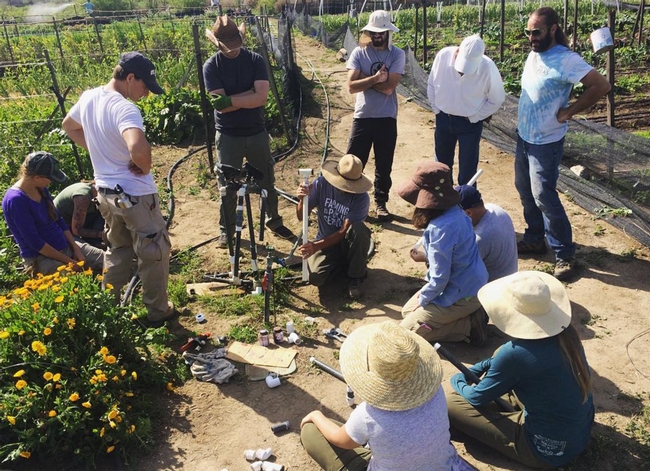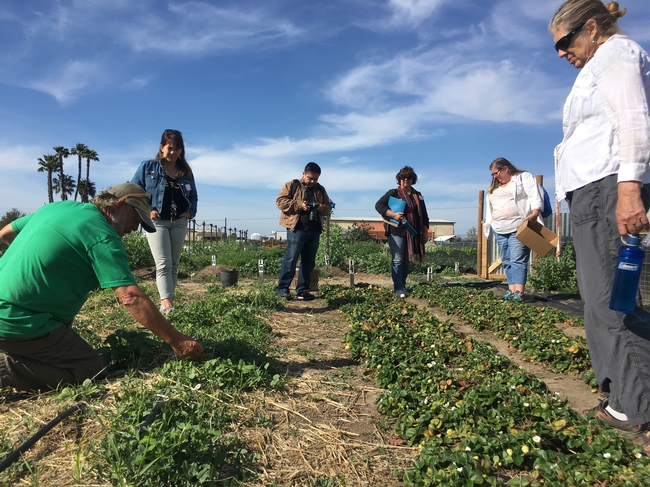
Posts Tagged: Urban Farms
Lucy Diekmann, Ph.D. joins UCCE as Urban Agriculture and Food Systems Advisor for Santa Clara and San Mateo Counties
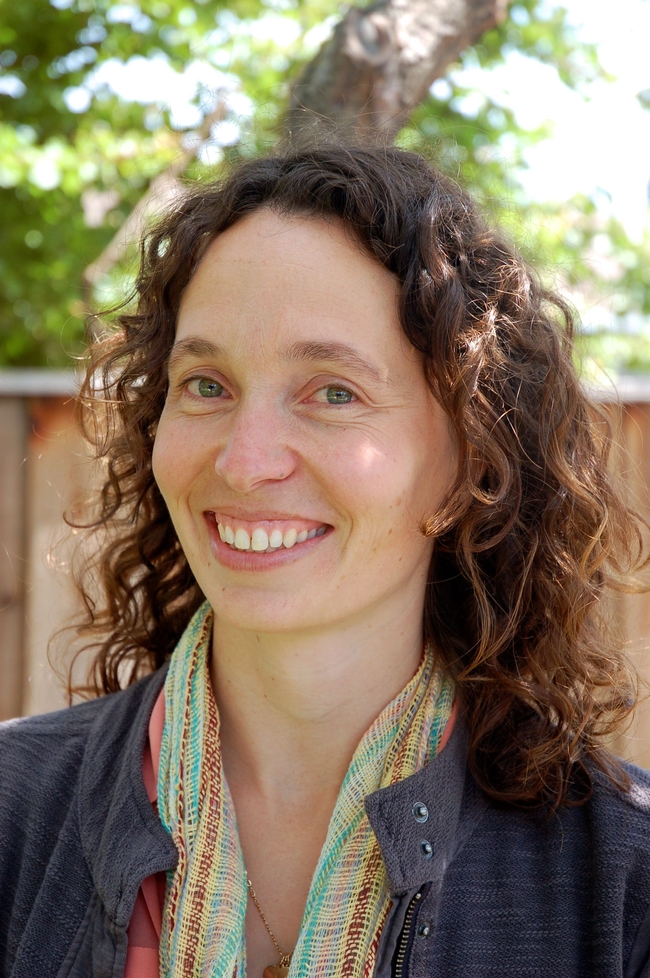
Silicon Valley's culture of innovation, diverse culinary traditions, fertile soils, and Mediterranean climate offer unique food system opportunities. In addition to large tech companies, these two counties are home to roughly 1300 farms with agricultural production valued at more than $450 million. Yet high land values make it difficult for farmers to find and keep land. The high cost of living also contributes to many families' struggle to put healthy food on the table. According to Second Harvest Food Bank, one in three children in Silicon Valley are food insecure. Many of those who are hungry are employed, but don't make enough to cover basic expenses in what has become the country's richest region as well as its most expensive.
Despite these challenges, this is an exciting time to work on food and agriculture in Silicon Valley. Santa Clara County is in the process of implementing the Santa Clara Valley Agricultural Plan to preserve agricultural lands and support a vibrant agricultural economy. The nonprofit organization SPUR is piloting a program to make California-grown produce more affordable for low-income families at grocery stores in San Jose and Gilroy. Civically engaged residents successfully advocated for Urban Agriculture Incentive Zones in the City of San Jose, creating new opportunities to put vacant land to productive use. The region's urban farms are involved in growing food for school cafeterias, developing a food entrepreneurship program, and educating students and the general public about food and agriculture, among many other activities.
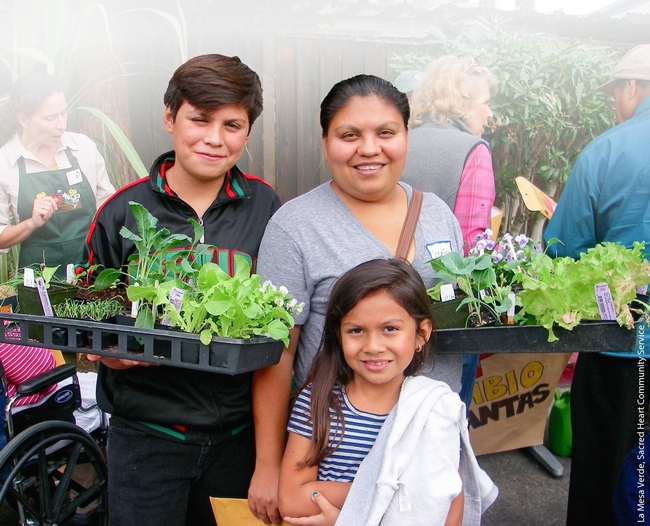
Originally from Maine, I relocated to the Bay Area 15 years ago to pursue a PhD at UC Berkeley. For the past eight years, I've been working and raising my family in the South Bay. If you'd like to learn more about my work or Silicon Valley's food system, please be in touch. You can find me here: http://cesantaclara.ucanr.edu/Programs/contact/?facultyid=40005.
Keeping Your Birds Safe from Disease
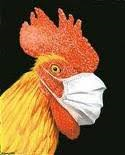
Virulent Newcastle disease is a highly contagious and deadly virus in birds; the virus is found in respiratory discharges and feces. Clinical signs in birds include:
- Sneezing, coughing, nasal discharge, green watery diarrhea, depression
- neck twisting, circling, muscle tremors, paralysis, decreased egg production
- swelling around eyes and neck, sudden death.
It is essential that all poultry owners follow good biosecurity practices to help protect their birds from infectious diseases such as virulent Newcastle. These include simple steps like washing hands and scrubbing boots before and after entering a poultry area; cleaning and disinfecting tires and equipment before and after moving them on/off the property; and isolating any sick birds. New or returning birds from shows should be isolated for 30 days before placing them with the rest of the flock.
For backyard flock owners, biosecurity measures include using dedicated shoes and clothes when caring for birds and not to use/wear those clothes/shoes in other areas.
In addition to practicing good biosecurity, all bird owners should report sick birds or unusual bird deaths through California's Sick Bird Hotline at 866-922-BIRD (2473). Additional information on VND and biosecurity for backyard flocks can be found at https://www.cdfa.ca.gov/ahfss/Animal_Health/Newcastle_Disease_Info.html
Click here for more information regarding vaccination of backyard birds.
Sick or dead backyard birds can be submitted to CAHFS laboratories for post-mortem examination ($20 plus shipping and handling). Information on this program can be found at:
https://www.cdfa.ca.gov/ahfss/Animal_Health/pdfs/CAHFS_NecropsyFactsheet.pdf
For additional information on who to contact for issues regarding backyard poultry, see:
http://ucanr.edu/sites/poultry/contact/
Virulent Newcastle disease is NOT a food safety concern. No human cases of Newcastle disease have ever occurred from eating poultry products. Properly cooked poultry products are safe to eat. In very rare instances people working directly with sick birds can become infected. Symptoms are usually very mild, and limited to conjunctivitis and/or influenza-like symptoms. Infection is easily prevented by using standard personal protective equipment.
San Diego’s Wild Willow Farm Grows Farmers
When you arrive at Wild Willow Farm & Education Center (WWF) it's hard to believe that you are merely miles from one metropolis – San Diego – to the north, and even closer to the bustle of Tijuana, Mexico to the south. The farm, operated by the non-profit organization, San Diego Roots Sustainable Food Project, calls 5.5 acres home in the Tijuana River Valley Regional Park, with about two acres currently under production.
The farm grows a variety of seasonal produce, herbs, flowers, and fruit, which they mostly sell through their “Farmshare CSA,” and a few wholesale restaurant accounts. A Saturday farm stand onsite is also in the works. However, ask founder and program manager Mel Lions what they really grow, and he'll tell you, “Farmers!”
The mission of the farm goes beyond growing food. WWF is a working educational farm that teaches and trains the next generation of farmers to be stewards of the land. They operate southern California's only soil-based farm school, with regenerative agriculture at the cornerstone. WWF offers weekly classes and workshops in food, community, and health-related topics, and four times a year they offer their signature six-week course, Farming 101: Introduction to Regenerative Farming. The course introduces students to basic principles and practices that focuses on transforming farms and food production into ecologically restorative, bio-diverse living landscapes best suited for small-scale production.
While much income for the farm is revenue generated by programs, funding always remains a challenge. The team at WWF depends on volunteer administrators, and part-time paid staff. In addition, lease restrictions inside the County Park prohibit traditional farm amenities, such as housing for staff and students. The County Park also only provides a five-year lease term, which limits long-term planning and investment in infrastructure upgrades.
In its eighth year of existence, WWF has weathered storms, which literally flooded the farm (as it sits in flood plain,) but they wouldn't want it any other way. WWF is a guaranteed breath of fresh air, and embraces all who are willing to make the trip off the beaten path.
Wild Willows Farm can be found at 2550 Sunset Avenue, San Diego, California 92154, or online at http://sandiegoroots.org/farm/farm-school.php. The farm's social media links are https://www.instagram.com/wildwillowfarm/ and https://www.facebook.com/wildwillowfarm.
Cathryn Henning is WWF's Farm Manager. You can email WWF at wildwillowfarm@sandiegoroots.org.
Home is where the habitat is: This Earth Day, consider installing insectary plants
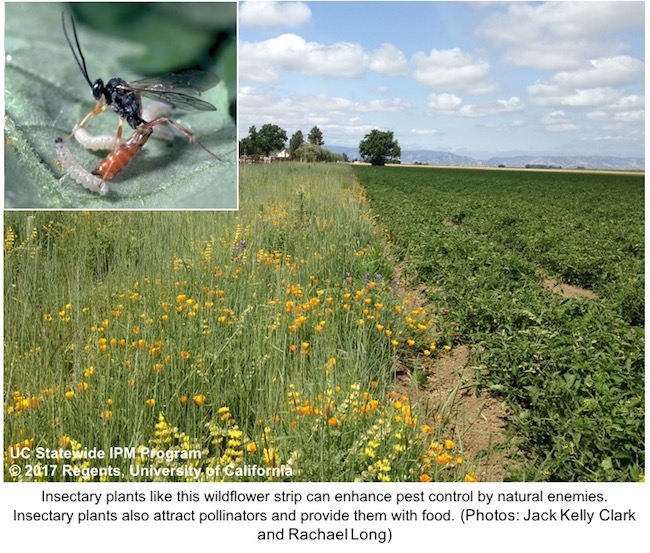
Flowering insectaries also provide food for bees and other pollinators. There are both greater numbers and more kinds of native bees in fields with an insectary consisting of a row of native shrubs planted along the field edge (called a hedgerow). Native bees also stay in fields with these shrubs longer than they do in fields without them. Therefore, not only do insectaries attract natural enemies, but they can also boost crop pollination and help keep bees healthy.
Sources:
- Flower flies (Syrphidae) and other biological control agents for aphids in vegetable crops. (PDF)
- Good news for hedgerows: no effects on food safety in the field.
- Hedgerow benefits align with food production and sustainability goals.
- Habitat restoration promotes pollinator persistence and colonization in intensively managed agriculture. (PDF)
- Reducing the abundance of leafhoppers and thrips in a northern California organic vineyard through maintenance of full season floral diversity with summer cover crops.
Urban Farming and Water Conservation: A Way of Life on the City Farm
Reyna Yagi (ryagi@ucanr.edu), Northern California Urban Agriculture Program Coordinator, University of California Cooperative Extension - Alameda and Contra Costa Counties
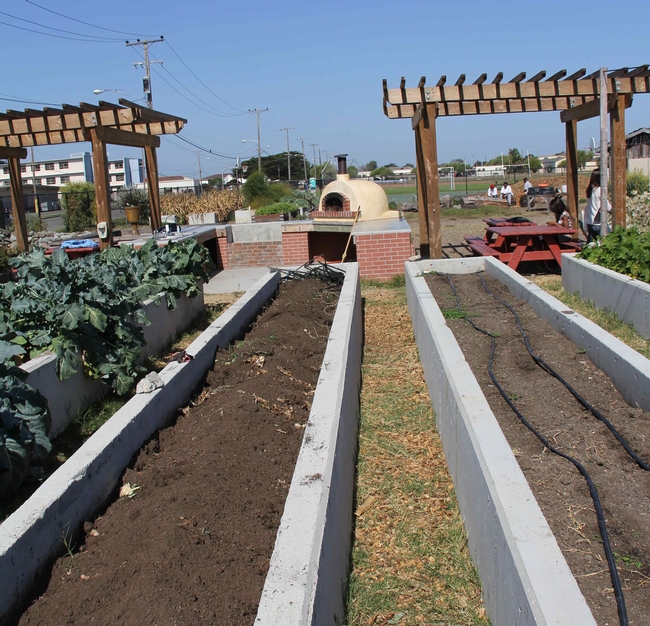
How can we as urban farmers do our part to conserve water? Turns out there are a lot of ways that not only will help to save our beautiful state's water, but also help you build a healthier farm or garden with less work on your hands!
Tip Sheet: Building Fertile Soil – Center for Agroecology and Sustainable Food Systems UC Santa Cruz
Tip Sheet: Your Food Garden During Drought – UC Master Gardener Program Contra Costa County
Tip Sheet: Drip Irrigation – Installation and Maintenance – UC Master Gardener Program of Sonoma County
-
Rainwater Harvesting allows you to capture rainwater from roofs, collect it in a cistern for diversion to your landscape for supplemental irrigation. You should also observe your site's water runoff patterns and see how you can manage and maximize your runoff to deal with large rain events, stormwater runoff and infiltration around your site. Consider a rain garden!
Tip Sheet: Rainwater Harvesting – UC Master Gardeners of Nevada County
- Dry Farming depends on the water stored in the soil from winter rains that plants can use in the spring as the weather warms. Plants rely on good soil moisture and deep roots to seek out this extra water without needing much supplemental irrigation. Grapes, potatoes, tomatoes, winter squash, fruit trees and grains can be dry-farmed.
Tip Sheet: How to Dry Farm Tomatoes in Contra Costa – UC Master Gardener Program – Contra Costa County
And Remember:
- Deep watering wets entire root zones which promotes deeper root growth.
- Always water early in the morning to prevent daytime water loss through evaporation.
- Keep an eye on the weather! A refreshing rain or cool, cloudy day will extend the time between watering.
- Maintenance, maintenance, maintenance. Visually inspect your drip system regularly for breaks, leaks and missing pieces. If you don't, your plants will certainly let you know with plant diseases.
California's agricultural industry is the largest in the nation and abroad, carrying with that a great responsibility to protect and conserve our resources. Urban farmers are highly cognizant of this. They are some of the most innovative and conservation-minded folks out there who understand the fragility of our water supply and their role in being model stewards of our lands and waters.

